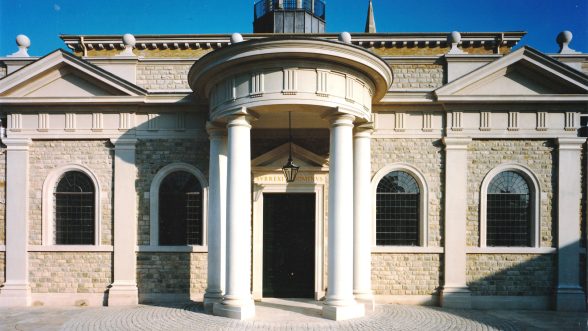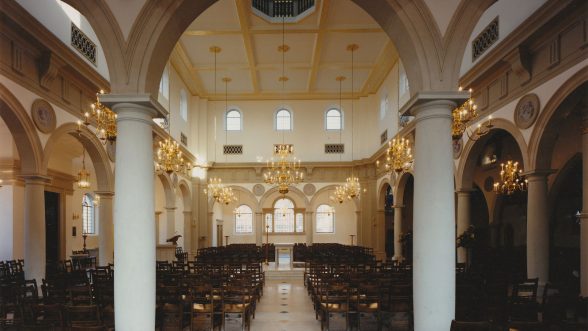This website uses cookies
This website uses cookies to enable it to function properly and to analyse how the website is used. Please click 'Close' to accept and continue using the website.



Image: Quinlan Terry Architects
The history of twentieth century architecture may be suffused with modernity – from Bauhaus to brutalism, art deco to high-tech – but there’s still ample room for tradition and classicism.
Brentwood Cathedral, designed in 1989-90 by Quinlan Terry Architects, exemplifies this. Commissioned by the Diocese of Brentwood, it substantially enlarged an earlier parish church of 1861 (built in the gothic style) and was opened in May ’91 by Cardinal Basil Hume. C20 considers the building to be an unprecedented example of a new build cathedral in an historic architectural style, making Brentwood a very worthy candidate for listing at a high grade.
While many other postwar Roman Catholic cathedrals were products of their era stylistically – the bare brick and steel of Middlesbrough and brutalist concrete of Clifton in Bristol being notable examples – Brentwood took its cues from the late Baroque 17th century Wren churches. A Portland stone construction with an open auditorium set to Liturgical Reform Movement (LRM) ideals, it also links effectively to its gothic neighbour through the use of ragstone and Welsh slate roof tiles.

Image: Quinlan Terry Architects
Indeed, apart from Lutyens abandoned 1920’s proposals for Liverpool Roman Catholic Cathedral and Sir Christopher Wren’s St Paul’s Cathedral in London, Brentwood is the only cathedral in the country designed in the classical style.
At present, no buildings by Quinlan Terry Architects have been listed; an anomalous situation for an architect who was very much at the zeitgeist of the late 20th century classical revival and post-modernist movements. Many of his developments, such as Richmond Riverside, are carefully considered contextual designs, which proved extremely popular with the general public – though were somewhat more divisive among the architectural press of the time.
Brentwood Cathedral ranks as one of Terry’s finest buildings, the financial resources of the client allowing for the highest quality materials to be used, a factor which creates an enormously successful result and ultimately fulfils the Church’s requirement to build for longevity and to serve future generations. Largely unaltered, the cathedral retains the original fittings designed by Terry in his vision for a total ensemble piece, and externally continues to provide an unexpected and dramatic addition to the local streetscape.

Image: Quinlan Terry Architects

Become a C20 member today and help save our modern design heritage.